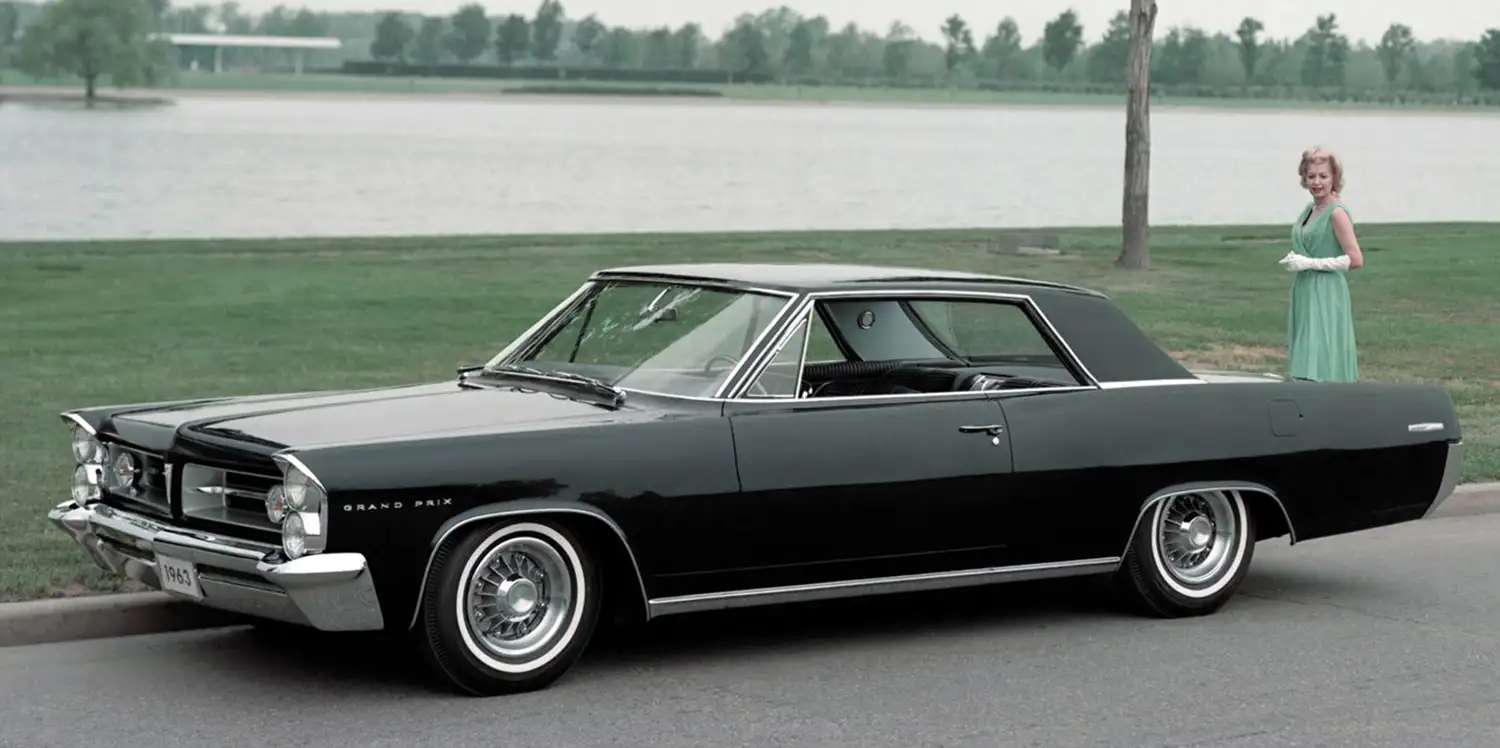
The 1963 Pontiac Grand Prix is more than just another car from the era. It is a genuine automotive icon. When you look at this car you instantly see why it holds a special place in history. The 1963 Pontiac Grand Prix was a key player in the personal luxury car market. It captured the public’s imagination with a blend of style, performance, and luxurious appointments. This model year helped solidify Pontiac’s reputation as a performance brand. It remains a fantastic example of 1960s American automotive design.
A Bold New Design Language Takes Center Stage
The 1963 Grand Prix featured a complete restyling. It moved away from the more conventional shapes of previous years. The new design showcased clean, sophisticated lines. These lines were a dramatic shift for the brand. Its most famous design change was the introduction of vertically stacked headlights. This unique feature became a signature Pontiac look. The car had a distinctive roofline with a concave rear window. It was a stylish touch not seen on other full-size Pontiacs. These elegant details helped the Grand Prix stand apart. The wide-track stance of the car also gave it an aggressive posture.
Power and Performance That Define an Era
What really gave the 1963 Pontiac Grand Prix its soul was what hid under the hood. The standard engine was the 389 cubic-inch V8. It was equipped with a four-barrel carburetor. This engine was factory-rated at a solid 303 horsepower. However, you could get even more power. The optional Tri-Power setup had three two-barrel carburetors. It boosted output to 330 horsepower. Performance enthusiasts, of course, desired the mighty 421 cubic-inch V8. This powerhouse offered up to 370 horsepower. This was the High Output Tri-Power version. A three-speed manual transmission came standard. A four-speed manual was available. There was also a three-speed automatic.
Luxurious Appointments for the Discerning Driver
Inside, the 1963 Grand Prix was a statement of refinement. Pontiac gave this car a truly upscale feel. Standard features included beautiful bucket seats. It also came with a center console. The dashboard was a work of art in itself. It featured real walnut trim. Many competitors used cheaper alternatives. The dashboard also housed a vacuum gauge. This provided a touch of performance flair. You could order the car with a range of options. Power windows and air conditioning were available. These made the Grand Prix a comfortable cruiser. The overall design created a cockpit-like experience for the driver.
The Grand Prix’s Lasting Legacy
The 1963 Grand Prix was a huge success. Its sales more than doubled from the previous year. This popularity showed that Pontiac had found a winning formula. It was a car that offered performance. It also had a sense of style and luxury. This model year is often seen as a turning point. It set the stage for later Pontiac performance cars. The Grand Prix was an important part of Pontiac’s history. It helped build the reputation that led to the GTO. It truly is a remarkable piece of American automotive history.
Summary
The 1963 Pontiac Grand Prix stands as a significant milestone in automotive history. Its bold new styling, with stacked headlights and a distinctive roofline, set it apart. The available V8 engine options, including the powerful 421 cubic-inch mill, gave it a true performance edge. Its luxurious interior and long list of options showed its commitment to the personal luxury segment. The success of this model year proved that a blend of style, power, and comfort was a winning combination. It cemented the Grand Prix’s place as a cornerstone of Pontiac’s legacy.
Disclaimer: Information about classic cars, including specifications and history, is subject to variations and may not be definitive. The vehicle described may contain modifications or non-original parts.
